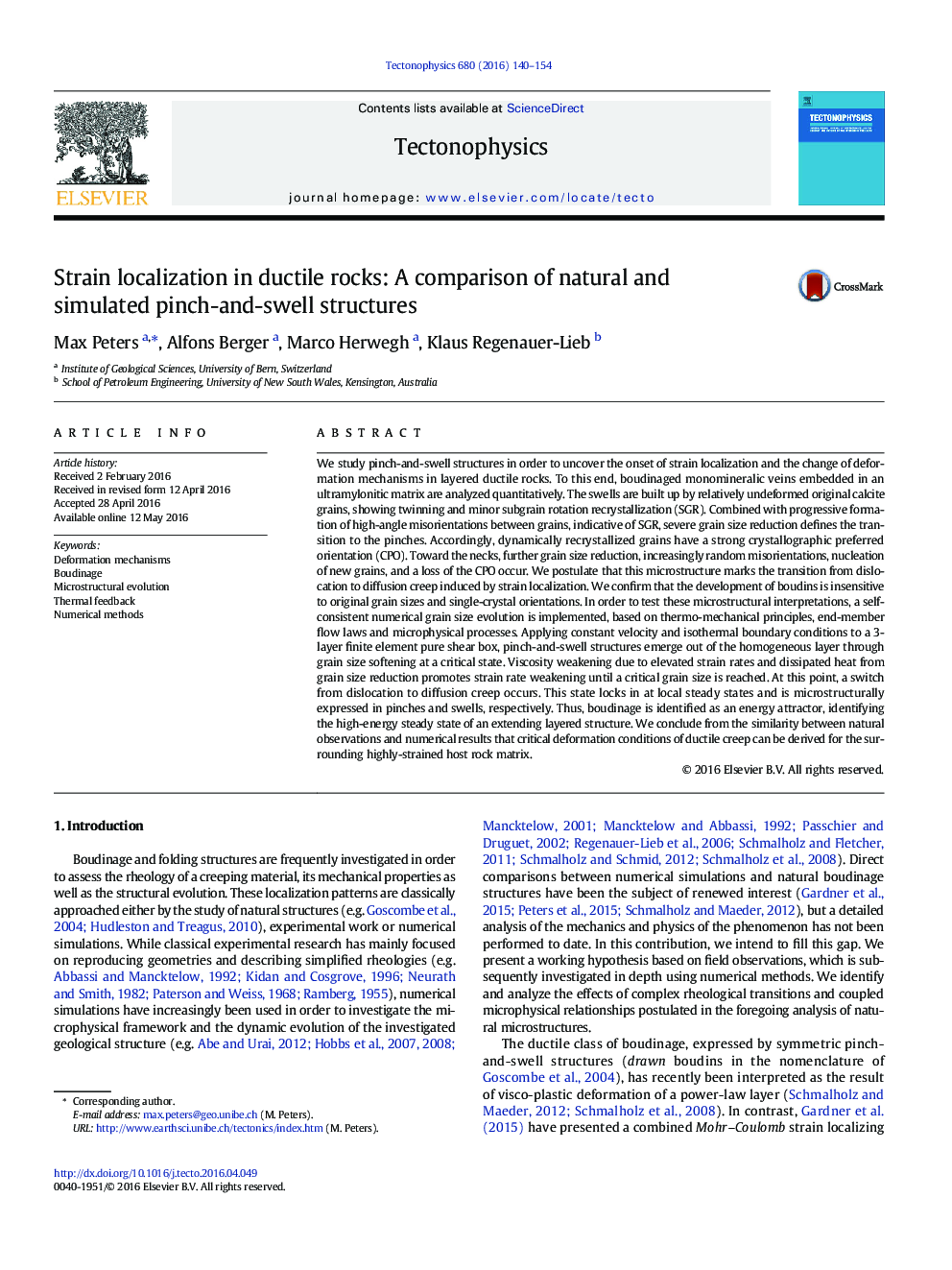| کد مقاله | کد نشریه | سال انتشار | مقاله انگلیسی | نسخه تمام متن |
|---|---|---|---|---|
| 6433354 | 1636718 | 2016 | 15 صفحه PDF | دانلود رایگان |
- We study the onset of localized deformation in layered ductile rocks.
- Pinch-and-swell structures commence with a change of dislocation to diffusion creep.
- Viscosity weakening is induced by dissipated energy from grain size reduction.
- The evolution reveals multiple steady states at different times and locations.
- The paleo-deformation conditions of localized creep can quantitatively be derived.
We study pinch-and-swell structures in order to uncover the onset of strain localization and the change of deformation mechanisms in layered ductile rocks. To this end, boudinaged monomineralic veins embedded in an ultramylonitic matrix are analyzed quantitatively. The swells are built up by relatively undeformed original calcite grains, showing twinning and minor subgrain rotation recrystallization (SGR). Combined with progressive formation of high-angle misorientations between grains, indicative of SGR, severe grain size reduction defines the transition to the pinches. Accordingly, dynamically recrystallized grains have a strong crystallographic preferred orientation (CPO). Toward the necks, further grain size reduction, increasingly random misorientations, nucleation of new grains, and a loss of the CPO occur. We postulate that this microstructure marks the transition from dislocation to diffusion creep induced by strain localization. We confirm that the development of boudins is insensitive to original grain sizes and single-crystal orientations. In order to test these microstructural interpretations, a self-consistent numerical grain size evolution is implemented, based on thermo-mechanical principles, end-member flow laws and microphysical processes. Applying constant velocity and isothermal boundary conditions to a 3-layer finite element pure shear box, pinch-and-swell structures emerge out of the homogeneous layer through grain size softening at a critical state. Viscosity weakening due to elevated strain rates and dissipated heat from grain size reduction promotes strain rate weakening until a critical grain size is reached. At this point, a switch from dislocation to diffusion creep occurs. This state locks in at local steady states and is microstructurally expressed in pinches and swells, respectively. Thus, boudinage is identified as an energy attractor, identifying the high-energy steady state of an extending layered structure. We conclude from the similarity between natural observations and numerical results that critical deformation conditions of ductile creep can be derived for the surrounding highly-strained host rock matrix.
Journal: Tectonophysics - Volume 680, 12 June 2016, Pages 140-154
